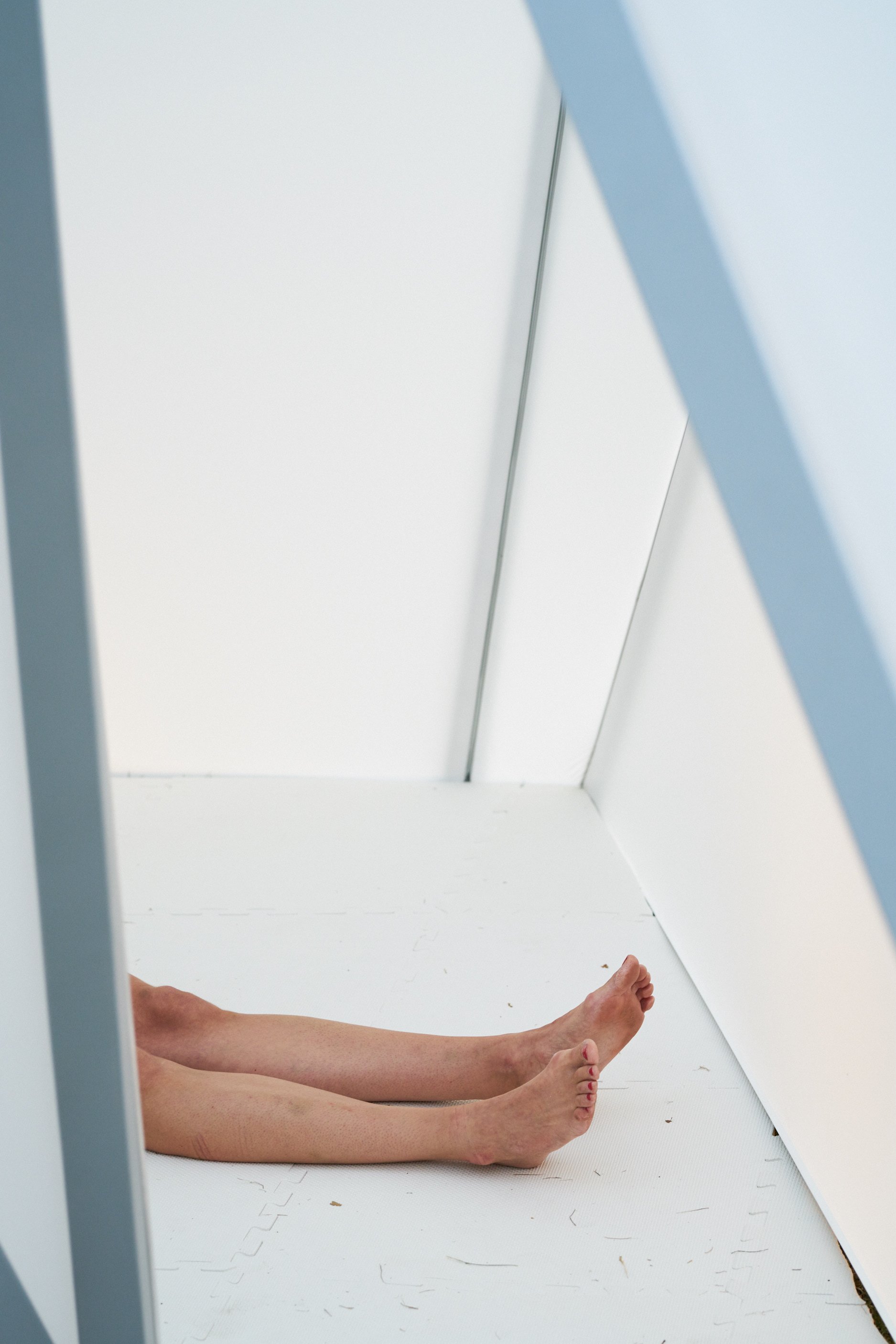Interaural Contour and Water Itself
Interaural Contour and Water Itself
a public installation
The aim of the subjective preference theory, devised by the Japanese acoustician Yoichi Ando, is to examine the emergence of a satisfying aural experience in a space that supports learning and creativity. The architectural installation ’Interaural Contour I’ by Marianne Jõgi draws on this theory and bridges architectural acoustics with art to create the conditions for wakeful relaxation.
This contemplative space, evoked through architecture and sound, was presented at Art Night on 7 - 8 July, 2018, in London. In dialogue, Interaural Contour I, an architectural installation by artist and researcher Marianne Jõgi and Water Itself, a meditative sound piece by composer Ülo Krigul, set the conditions for wakeful relaxation and reflexivity. The installation took root in Battersea Park on the south bank of River Thames, in proximity to the decommissioned Battersea Power Station and the regeneration zone of Nine Elms. With the rapid process of gentrification as a backdrop bringing notions of home, place-based identity and community under question, the festival invited artistic responses to “What do we call home now?”. Our project pointed to the bodily home and psychic interior of a human as being rendered principle sites of resistance, retreat and renewal.
“An inner state of calm is evoked by the installation’s mathematical construction, in which the platonic year of the Earth (26,000 years) and the alpha rhythm in the human cerebral structure (8 – 13 Hz) converge. Alpha waves are brain waves detected during wakeful relaxation.”
‘Interaural Contour I’ draws its architecture from the findings of scientific studies concerned with the relationship between geometry, acoustics and their effect on our feelings and state of mind. The interior of the installation supports the emittance of Alpha brain waves, associated with the feeling of calm, relaxation, access to creativity and the ability to acquire new knowledge. Furthermore, through the open crown of the structure, the public is invited to question permanence, often endued on the stellar sky.
In proximity to the installation, Krigul’s sound work ‘Water Itself’ was available on headphones. The 25-minute meditational piece is composed in relation to the frequencies of the platonic year of the Earth (172.06 Hz), the Earth year (136 Hz) and Earth day (194,71 Hz) (equivalent to the musical pitches F, G and C# respectively). The sound piece was initially created as a recorded improvisation using three large tuned gongs and later transcribed for a mixed choir. The lyrics, derived from the work of Estonian poet Ilmar Laaban, are a linguistic-surrealistic play of decomposing and recomposing words and syllables, leading one to the dreamlike path of water becoming earth and water again.
In relationship to the city of London, this installation served as a refuge for the senses and brought the often harmful consequences of cities on mental health into focus. What constitutes ‘sustainable architecture’ from the point of view of human experience? This inquiry is important as it opens us to insights about the co-emergence of the environment and human flourishing, in which the reciprocity between the psychological and physical, the personal and environmental is seen as sustaining healthful earthly dwelling. Over the course of the event, we witnessed the installation becoming a lighthouse of sorts, setting the conditions for people to gather and drop into the depth of themselves for a moment. They resurfaced rejuvenated, peaceful, grateful. As such, the heart of the project was a renewed sense of connection.
Credits
Artworks by Marianne Jõgi and Ülo Krigul. Presented by Hanna Laura Kaljo and Estonian Contemporary Art Development Center. This project was made possible by Karin Laansoo, Kadri Laas and Kadi-Ell Tähiste at Estonian Contemporary Art Development Center; Zarina Rossheart; Tara Rai; Nick Robinson; Andrew Ronald; Sten Jõgi and Lenari Lanno at Laestuudio; Michael Heilgemeir; Simon at Silent Event; Ned McConnell and Lou Marcellin at Pump House Gallery; Cara Gibson at Battersea Park and Paul Meadows at Salus. Supported by the Government Office of Estonia, the Cultural Endowment of Estonia, the Ministry of Culture, and Outset Estonia as part of the Republic of Estonia Centenary celebrations. All images by Michael Heilgemeir, courtesy the artists and ECADC, Tallinn.















